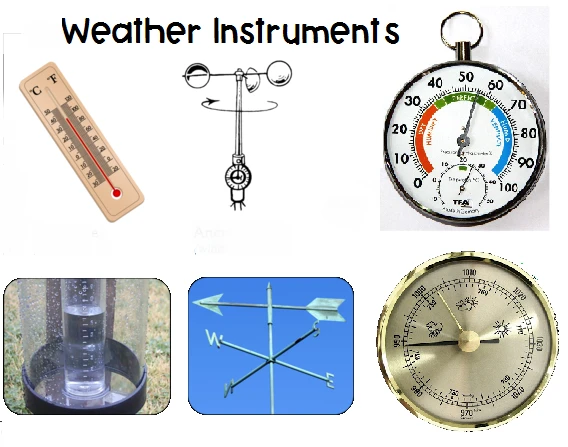
# Weather Instruments: Tools for Measuring Atmospheric Conditions
## Introduction to Weather Instruments
Weather instruments are essential tools used by meteorologists, scientists, and weather enthusiasts to measure various atmospheric conditions. These devices help us understand and predict weather patterns, which is crucial for agriculture, aviation, marine navigation, and daily life planning.
## Common Types of Weather Instruments
### Thermometers
Thermometers measure air temperature, one of the most fundamental weather parameters. Modern digital thermometers provide quick and accurate readings, while traditional mercury or alcohol thermometers are still widely used.
### Barometers
Barometers measure atmospheric pressure, which is critical for weather forecasting. A sudden drop in pressure often indicates approaching stormy weather, while rising pressure suggests fair conditions.
### Anemometers
Anemometers measure wind speed and sometimes wind direction. The most common type is the cup anemometer, which rotates with the wind to determine velocity.
### Hygrometers
Hygrometers measure humidity levels in the air. Understanding humidity is important for predicting precipitation, fog formation, and human comfort levels.
### Rain Gauges
Rain gauges measure the amount of liquid precipitation over a set period. Simple versions consist of a cylindrical container with measurement markings, while more sophisticated models can record data electronically.
## Advanced Weather Measurement Tools
### Weather Stations
Modern weather stations combine multiple instruments into one unit, often with digital displays and data logging capabilities. These can range from simple home weather stations to complex professional setups.
### Weather Balloons
Weather balloons carry instruments called radiosondes high into the atmosphere to measure temperature, humidity, pressure, and wind at various altitudes.
### Weather Satellites
Satellites provide a global perspective on weather patterns, tracking cloud formations, storm systems, and other atmospheric phenomena from space.
### Doppler Radar
Doppler radar systems detect precipitation, measure its motion, and estimate its type (rain, snow, hail, etc.). This technology is particularly valuable for severe weather warnings.
## The Importance of Weather Instruments
Accurate weather data collected by these instruments helps in:
– Improving weather forecasts
– Warning about severe weather events
– Studying climate change
– Supporting various industries (agriculture, transportation, construction)
– Enhancing scientific research
## Maintaining Weather Instruments
For accurate measurements, weather instruments require:
– Proper calibration
– Regular maintenance
– Correct placement (away from obstructions)
– Protection from extreme conditions when possible
As technology advances, weather instruments continue to become more precise, durable, and capable of measuring increasingly complex atmospheric parameters. These tools remain our primary means of understanding and predicting the ever-changing weather conditions that affect our daily lives.
Keyword: instruments of the weather